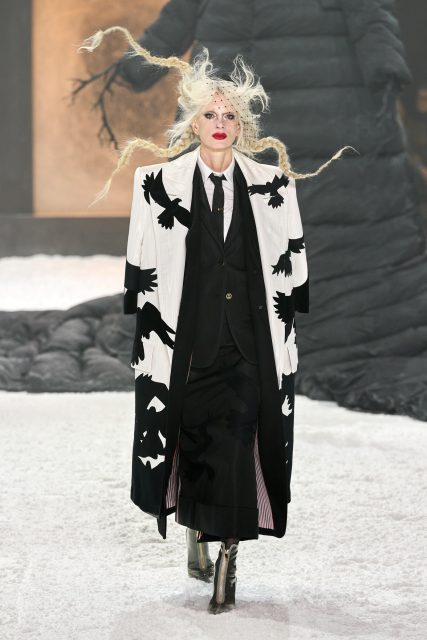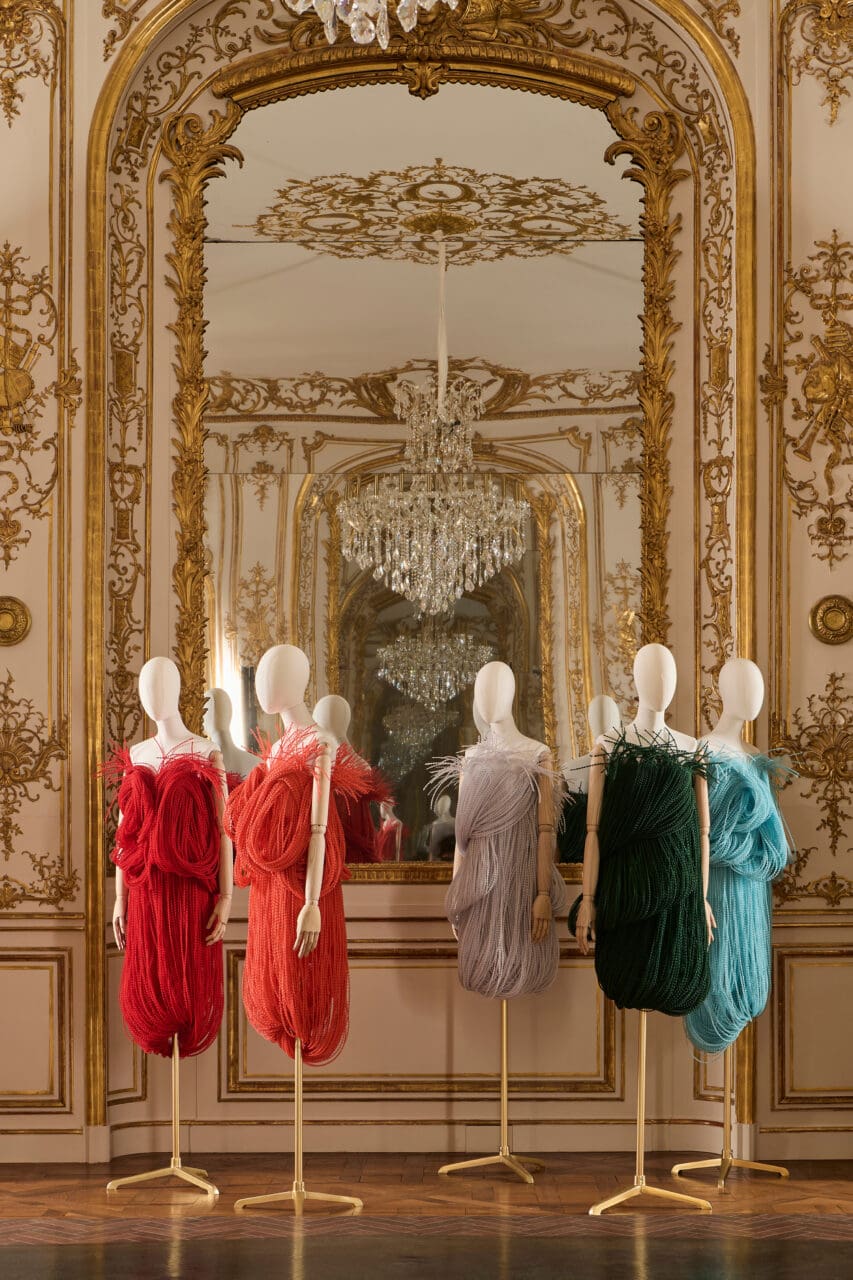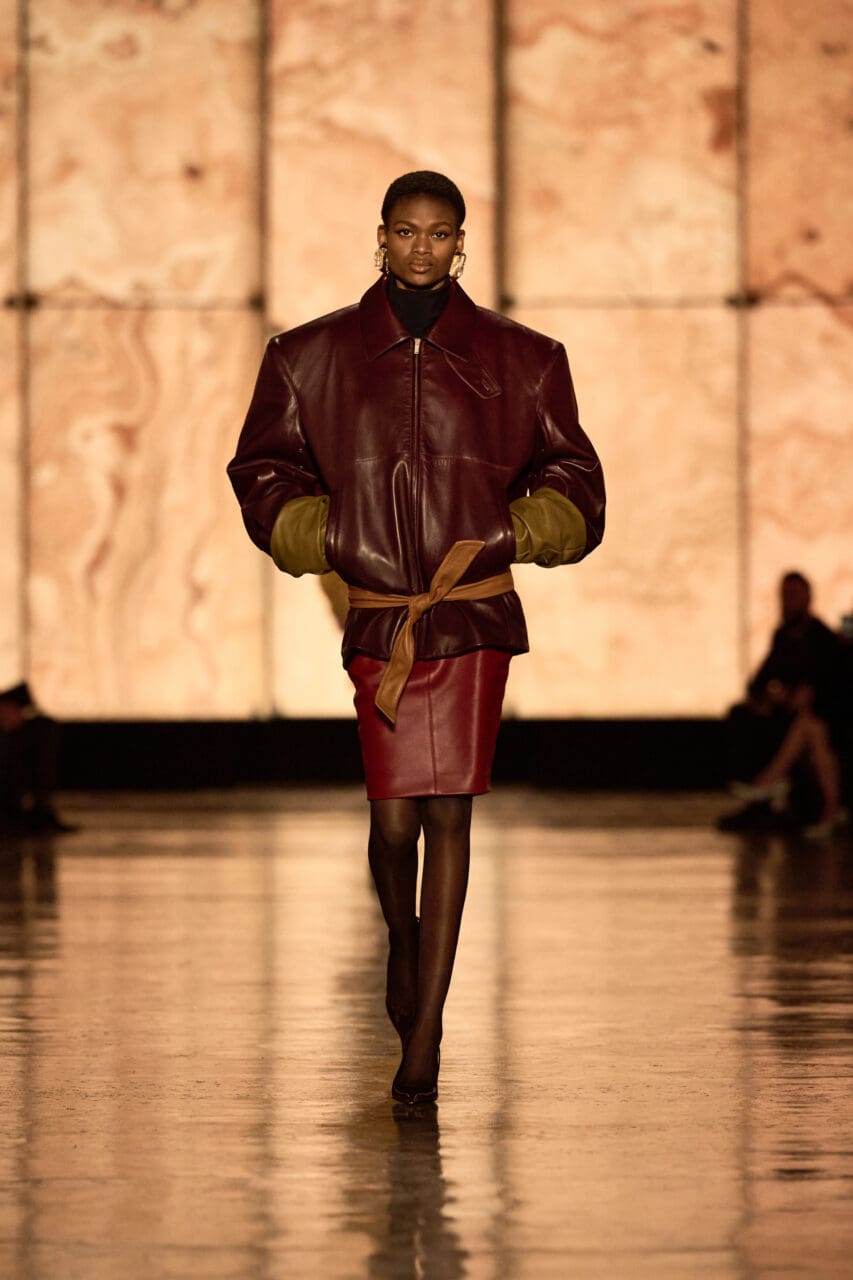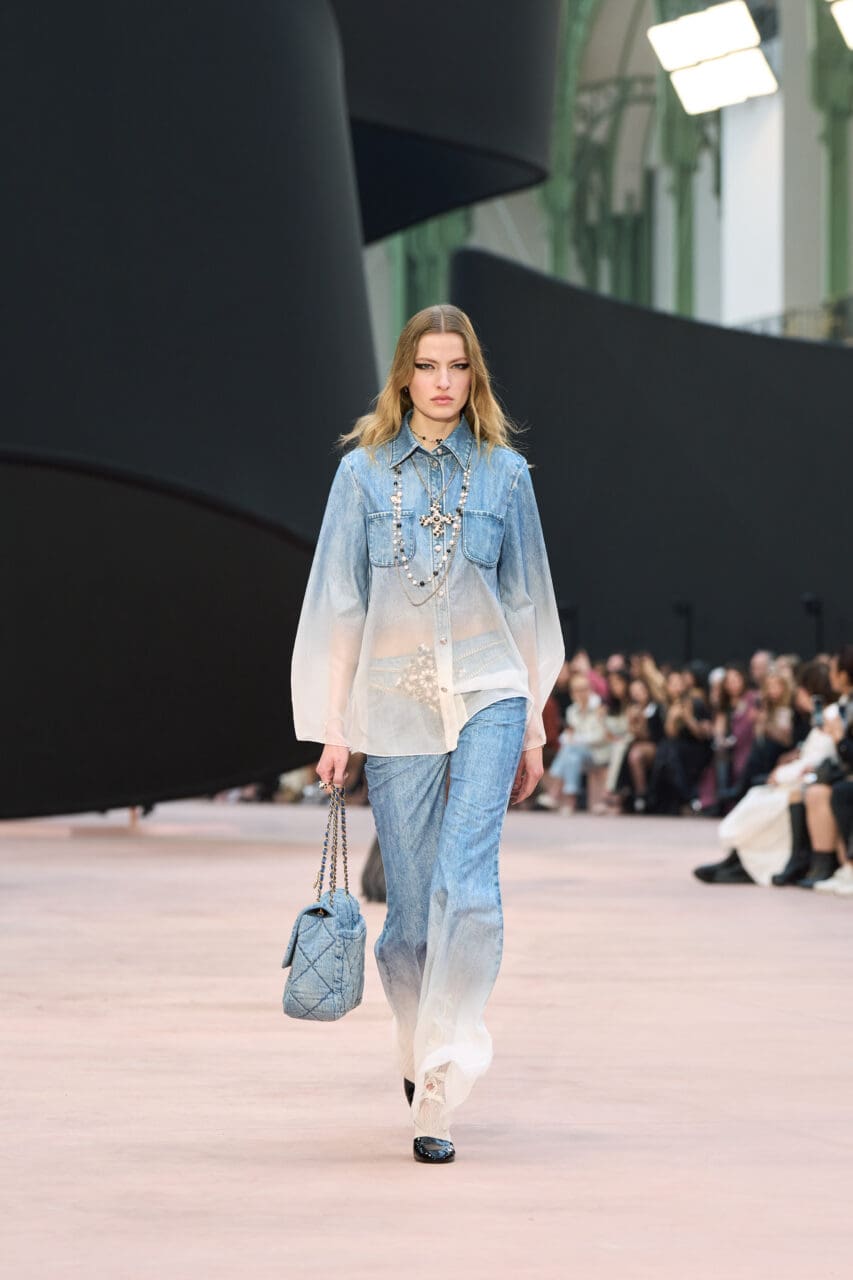A finely designed duet between the specters of sex and death, this spookily stimulating Simone Rocha collection played what we desire (but can’t automatically possess) against what we’d powerfully prefer to avoid (but will inevitably all end up getting). It was also, she explained, the last part of a three show cycle. Last season’s London collection was titled The Dress Rehearsal because it was conceived alongside and creatively prefaced (through the placement of roses within the garments) her couture collaboration with Jean Paul Gaultier. That acclaimed just-passed Paris centerpiece was called The Procession, to mark her creative union. And this finale was named The Wake. It was the end of the affair.
We gathered in the 12th century St. Bartholomew’s Church, hung heavy with incense and quite probably ghosts, and a venue where we had previously seen spring 2022. When Rocha was researching Gaultier’s archive—which she noted with almost ghoulish relish is stored in boxes termed ‘coffins’—she was invited to view the mourning dress of Queen Victoria in the British royal archive at Hampton Court palace. Victoria famously wore black every day after her husband Prince Albert’s death in 1861 until she joined him 40 years later. Said Rocha: “It was really wild. I’d be in Hampton Court looking at these pieces that were all about security on the body and mourning as a front and form of protection, and then I’d be in Paris looking in Gaultier’s coffins at these super promiscuous perverse pieces.” What united them, she realized, was boning.
Corsetry thus ran through this third collection. Its delicate superstructure embraced the abdomen within tie-detail nylon parkas and rompers. Its contours defined the darting in little sheer jackets worn north of pantaloons, some of the many womenswear looks in which Rocha worked to place the models’ breasts on twin metal-beaded podiums shaped perhaps after lips. “There’s the perversity of being adorned, and cupped, in these organza corsets: it’s really stimulating on,” said Rocha. She countered this emphasis with faux-fur hip-emplacements that were accented by shoes, earpieces, and the hems of translucent trapeze dresses worn over more ballooning pantaloons, or the furry buckles that swung from the back of sheer pencil skirts. In menswear, this attention was transferred to the shoulder where twin shooting patches in more faux fur or glass beading stretched from scapula to pectorals.
There were many more characters in Rocha’s congregation. Polo shirts and closed-forearm fine-knits disintegrated into banks of tulle or more corsetry, sometimes sewn with metallic flowers. The models wore eyeleted and strapped thick soled oxfords or adorned Crocs, some in a short gumboot style. A long black dress in sections of fine jersey was peppered with lines of gleaming eyelets, while a red lurex-shot knit pencil skirt was topped with a matching knit hoodie with more beading at the ears.
More apparently conventional dresses in crushed golden velvet, pale pink brocade, and bow-bedecked chocolate taffeta exhibited a twisted primness: prim-iscuous. The fabrics were pressed to seem recently disinterred after long slumber, perhaps in a coffin. One dress was embellished with, and many bags were shaped after, a shaggy, warped-headed black or brown dog with startling red beaded eyes that Rocha modeled after the Church Grim, a spectral canine once believed to be our final companion on the road to oblivion. Tonight Rocha gave us a gorgeous, deathly, lascivious send-off to remember. It was just as Queen Victoria once described “too great intimacy with artists”: both “very seductive, and a little dangerous.”
Editor
Luke LeitchCredit
Lead image: Daniele Oberrauch / Gorunway.com





